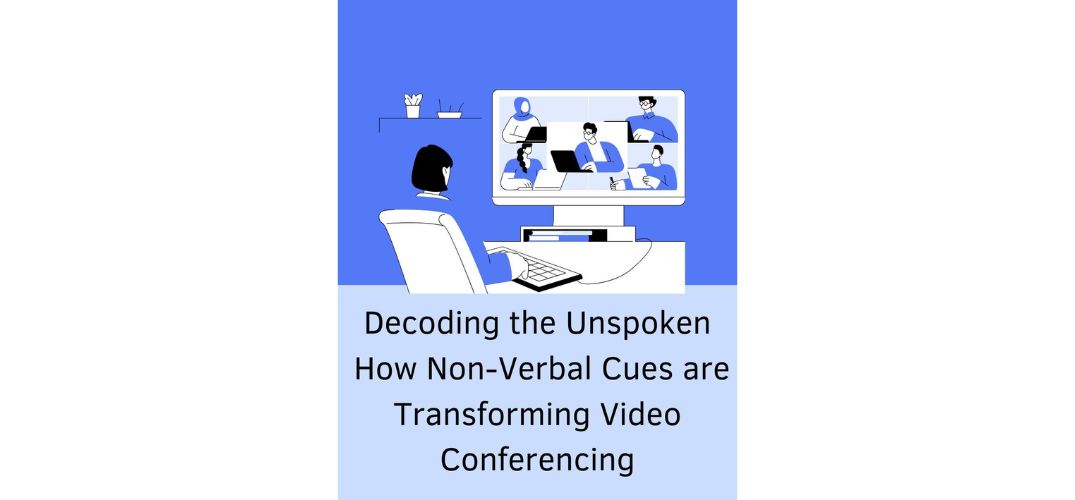In today’s digital transformation era, effective communication goes beyond words. Video conferencing, a staple in remote collaboration, has long focused on verbal exchanges. However, innovations by Anurag Awasthi and his team highlight how non-verbal cues—”honest signals”—can significantly impact virtual interactions. Byungki Byun, Philip A. Chou, Ashish Kapoor, Bongshin Lee, and Mary Czerwinski, co-authors of the study, also contributed to this groundbreaking work, which delves into the role of gestures, expressions, and vocal patterns in shaping online conversations.
The Science Behind Honest Signals
Human communication extends beyond spoken words. Honest signals, such as gestures, voice modulations, and facial expressions, reveal underlying emotions and intentions. These cues are involuntary and can indicate confidence, engagement, or hesitation. While traditionally studied in face-to-face interactions, the research team has now adapted this concept to video conferencing, offering new insights into digital communication.
Real-Time Analysis for Enhanced Conversations
This research introduces a groundbreaking system that analyzes and interprets honest signals in real-time, enhancing communication dynamics. The system extracts valuable insights into social behavior by processing low-level audio and visual features from video calls—such as speech intonations, pauses, facial expressions, and interaction patterns. Advanced machine learning algorithms detect subtle cues like tone variations, microexpressions, and turn-taking efficiency, translating them into actionable feedback. This allows participants to refine their communication style, fostering clearer, more engaging interactions. The system optimizes virtual communication by bridging the gap between unconscious social signals and conscious behavioral adjustments, improving clarity and emotional resonance.
Understanding Social Roles Through Signals
The study identifies four key honest signals that shape video conferencing dynamics:
- Activity: Measures the energy and engagement level of a speaker.
- Consistency: Indicates the regularity and predictability of speech patterns.
- Influence: Reflects how much a participant dominates or guides the conversation.
- Mimicry: Captures the extent to which participants subconsciously mirror each other’s behaviors, a sign of agreement or rapport.
These signals are instrumental in defining social roles within a conversation, such as active listening, leading, exploring ideas, or collaborative teamwork.
Predicting Conversation Outcomes
The research extends beyond merely identifying signals and demonstrates their predictive power. By analyzing these non-verbal cues, the system can assess a conversation’s overall quality and nature. For instance, high influence and activity often correlate with leadership roles, while strong mimicry signals teamwork and consensus-building.
This ability to classify conversation types—whether negotiation, brainstorming, or personal discussions—offers a potential game-changer for industries reliant on virtual communication, such as remote work environments, online education, and telemedicine.
The Role of User Feedback in System Optimization
A key aspect of this innovation is its adaptability based on user feedback. In studies conducted by the team, participants found the system’s visual feedback helpful in moderating their behavior. For example, individuals who realized they were speaking too much made conscious efforts to listen more, while those who appeared disengaged adjusted their involvement levels. These findings underscore the practical applications of honest signal analysis in improving digital communication.
Implications for Future Communication Technologies
As video conferencing becomes integral to professional and personal interactions, tools that enhance communication effectiveness are increasingly valuable. This research paves the way for integrating AI-driven non-verbal analysis into mainstream communication platforms. Future developments could incorporate deeper facial recognition capabilities, physiological data tracking, and multi-party conversation analysis, further refining the accuracy and applicability of honest signal detection.
A Step Towards Smarter Virtual Interactions
Recent research has made a significant breakthrough in understanding human interaction in digital spaces. This work paves the way for more natural, intuitive, and effective virtual communication by leveraging non-verbal cues. As technology advances, incorporating honest signals into video conferencing tools could transform how people connect online. These insights offer new possibilities for enhancing digital interactions, making them more engaging and authentic. Integrating such cues could redefine remote communication, bridging the gap between virtual and in-person experiences.
In conclusion, Anurag Awasthi and his co-authors provide a compelling glimpse into the future of video conferencing, where subtle non-verbal cues become as important as the words we speak. With ongoing AI advancements, these innovations hold the potential to revolutionize digital communication, making it more human, responsive, and engaging.



































